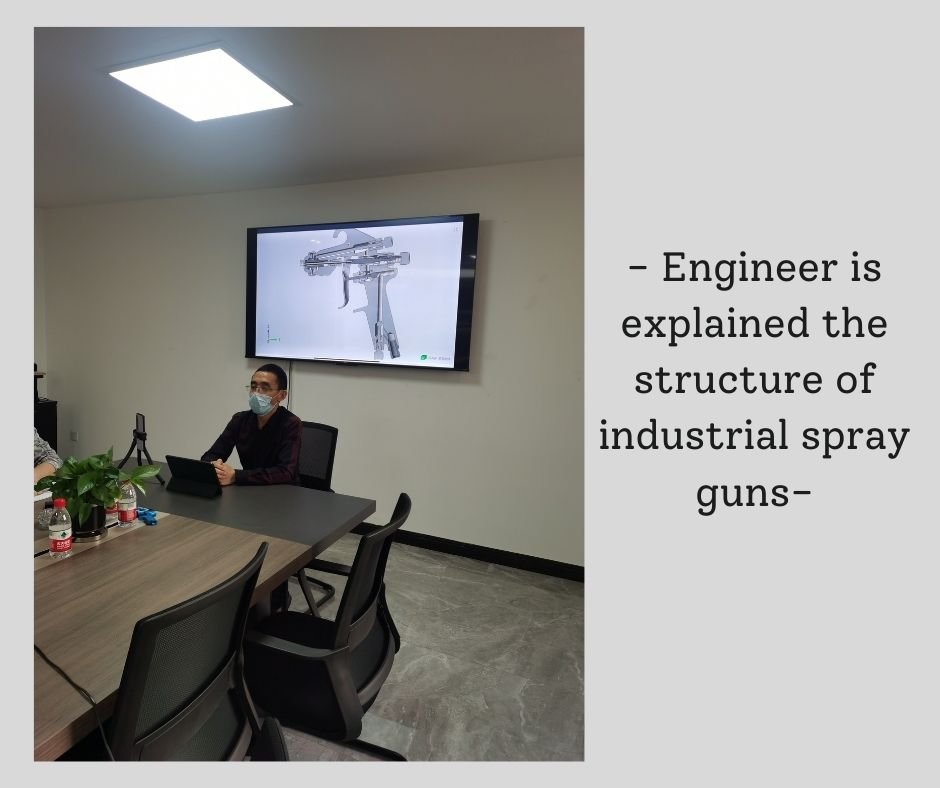As a professional spray gun manufacturer, we regularly hold training sessions to make our employees more experienced in terms of spraying skills and machining. We had our first training session about industrial spray guns on Wednesday. You can find some interesting things.
We have shared five topics about industrial spray guns.

Topic 1: Two main channels in the spray guns
The spray gun has two main channels, the airflow channel and the paint channel. The airflow channel is connected to the air supply, which mainly involves the role of the air valve and valve needle.The paint channel is used for the transmission of paint. Since paint is corrosive, we generally use stainless steel paint passages and high-quality seals to prevent paint leakage.

Topic 2: Taper problems in gun machining
Good sealing can be achieved with gaskets and the taper of the intermetallic threads, especially the taper of the fluid inlet connector and the taper of the connection between the nozzle and the gun body. Depending on different models, there are different standards. Too loose or too tight will affect the use of the gun.
Topic 3: How do you know the coaxiality of a gun and what problems can be caused?
To determine whether the gun is coaxial, mainly observe whether the distance between the nozzle and the airflow cap is uniform. If the space is unequal when you squeeze the trigger, that is not coaxiality. It affects the performance of the atomization and the lifespan of the gun.
Topic 4: The purpose of the first stage
What is the first stage? When the trigger is pulled halfway, the gun only emits air, and no liquid comes out. Most people will think of it as a role in removing surface dust. Still, its most important part is that the air comes out before the paint and is an excellent atomizing environment for the head area of the gun to atomize the pigment into smaller particles.
Topic 5: Troubleshoot during the product testing
When the product is assembled, the next step is testing. The problems that arise during testing can also occur with the gun in daily use—for example, fluttering, crescent, air or fluid leaks, etc. You can refer to our previous article for details.

Each training will make us more understand the construction of the product production and use, which plays a critical role in our after-sales and research and development. Still, we, as a professional spray gun manufacturer, must have.




